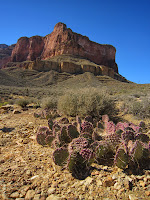In retrospect, I think a lot of people misunderstand hockey. To outsiders, the perception of hockey is one of violence and brute physicality which leaves very little room for skill and finesse. However, in my completed biased and partisan opinion, there is not a single game in the world that combines everything together like hockey.
Physicality
Let's start with the obvious. There is hitting in hockey. But a lot of times, it is a unique skill set. P.K. Subban is a very gifted player. I think a lot of people mistakenly assume that if you are big, you can hit and that is all there is to it. Subban is a little bit above average sized, but he is by no means unusually large. The key to his hits is his elite skating ability and timing. If you are terrible at either (and most human beings probably are), you are going to miss. This isn't football, where you can just wrap some guy up in your arms if he side steps you. Subban has to skate backyards, maintain his gap, and time his pivot to make this hit.
If he misses, his target has a free lane to the net. The play he makes here is pretty devastating. But physicality in hockey is partially a mental game. The next time a player is flying down the wall with the puck, maybe he hesitates because he knows Subban is out there. Maybe he doesn't make the bold play because in the back of his mind, he worries about getting hit. A play like this impacts the whole game.
Because you are skating into them, these type of hits hurt. A lot. Ask Brad Marchand. Or Adam Larsson. But delivering them is an underrated skill.
Footwork
When people hear about footwork, they might think of soccer or basketball. Maybe they think of boxing. Skating can be quite difficult. The human body was built to walk and run. Pretty much everyone can do it competently. Skating is quite different. And there is a big difference between slow, gliding, "public skate at the park" skating and skating in hockey. Unless you're a figure skater, you probably don't have the edge work to do it. You probably don't even know what edge work is. Matt Duchene (#92) has incredible footwork and edgework and it allows him to change direction and speed on a dime.
Stick Handling
Pavel Datsyuk. That is all.
It is a longer clip. I understand if you don't want to watch it all. It's worth it if you do.
Datsyuk is strong, but at 5'11" he is not big. But you probably can't hit him either anyway. Someone tried to here. He can thoroughly embarrass you when you try and cover him (#39 is Logan Couture and he's an All-Star). He might walk through your entire team. Or he'll thread a pass through everyone (#33, the player he walks around, is Zdeno Chara - probably the best defenseman in the world). He's not bad in the shootout either.
Athleticism
Basketball players are super athletic. The amount of body control that elite NBA players like LeBron James and Dwyane Wade exhibit are incredible. Nate Robinson is listed at 5'9" and won the NBA Slam Dunk Contest. He is an athletic freak.
I think athleticism is an underrated aspect of hockey. Hockey is played on ice and in skates so perhaps it is difficult to relate at times.
Maybe Jonathan Quick gets a little lucky here in this clip. Or maybe he has incredible coordination. I think it's more the latter than the former.
Miikka Kiprusoff in the above clip looks back and kicks the puck out mid air with his heel and saves a goal.
This Alex Ovechkin goal does not require any explanation.
There really is more to this game then meets the eye. But I'll stop here because this entry already has a lot of YouTube links.
Suffice to say - there is something for everyone in hockey. Try it out sometime. It's a beautiful game.
All videos courtesy of YouTube. Photo of Nicklas Lidstrom is licensed in the public domain.

.tiff)



















